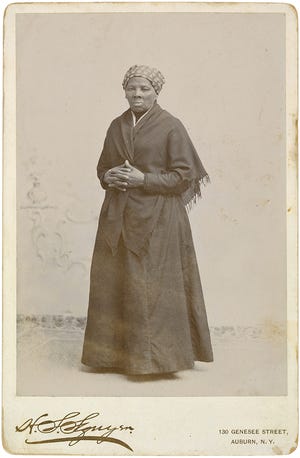HIGHLIGHTS
- The U.S. Mint has begun selling commemorative coins honoring abolitionist hero Harriet Tubman, following the initiative proposed by former President Barack Obama a decade ago to place her image on the $20 bill.
- The coins, including a $5 gold, $1 silver, and half-dollar Tubman coin, are available for preorder, with shipping scheduled to start in February. A collection of all three coins is priced at $836.25.
- A surcharge is added to each coin purchase, with $35 for the $5 gold coin, $10 for the silver dollar, and $5 for the half-dollar. The proceeds from this surcharge will be evenly divided between The Harriet Tubman Home, Inc., and the National Underground Railroad Freedom Center.
Ten years after the abolitionist hero’s inclusion on the $20 bill was suggested by former President Barack Obama, the U.S. Mint started selling coins honoring Harriet Tubman on Thursday.

Commemorative $5 gold, $1 silver, and half-dollar Tubman coins were put up for preorder on Thursday, with USM stating that shipping would start in February. The asking price for a collection of all three coins was $836.25.
According to a news release from the U.S. Mint’s director, Ventris C. Gibson, “every coin produced by the United States Mint helps to tell a story that teaches us about America’s history or connects us to a special memory.” “We hope this program will honor the life and legacy of Harriet Tubman and inspire others to learn more about this amazing woman.”
A surcharge is added to the purchase of each coin: $35 is charged for every $5 gold coin sold, $10 for every silver dollar sold, and $5 for every half dollar. According to USM, the premium will be split evenly between the non-profit organization The Harriet Tubman Home, Inc., located in Auburn, New York, and the National Underground Railroad Freedom Center in Cincinnati, Ohio.
The news follows Obama’s 2014 push to place Tubman on the $20 dollar, which began when the president received a letter from a Massachusetts child stating that women should be represented on banknotes. According to Obama, it’s “a pretty good idea.”
Black History Month in February 2020 saw the introduction of legislation by U.S. Representative Gregory Meeks to make the coins.
“Harriet Tubman, a woman of extraordinary bravery, continues to stand as a testament to her leadership and fortitude throughout times of extreme adversity. Meeks stated at the time that “she created a beacon of hope for slaves who fled from the undignified cruelty of human bondage as a crucial conductor in the underground railroad.”
Is Harriet Tubman a person?
In the early 1820s, Tubman’s mother, Araminta “Minty” Ross, gave birth to her in Dorchester County, Maryland. She was taken captive at an early age and, at the age of 13, started laboring in the field gathering flax.
She fled when she was about 27 years old, and she made roughly 13 trips back to Maryland to free up to 70 slaves using the Underground Railroad, a system of safe homes and escape routes set up by abolitionists, both Black and White.
The 1850 Fugitive Slave Law would have forced her to return to slavery in the Deep South and subjected her to corporal punishment if she had been discovered.
One of the first Black women to serve in the military, Tubman also worked for the Union Army during the Civil War as “a scout, spy, guerrilla soldier, and nurse,” according to the National Women’s History Museum.
According to the National Parks Service, Tubman joined Susan B. Anthony, Elizabeth Cady Stanton, and others in the post-war women’s suffrage movement.
She purchased a home in Auburn, New York, in 1859 and established a home for the elderly. She died there in 1913 and was buried with military honors at Fort Hill Cemetery.

Jacob Lew, Obama’s Treasury Secretary, invited the public to weigh in on who should be included in the country’s currency. Obama declared in April 2016 that Andrew Jackson would be replaced with Tubman on the $20 and that Jackson would be placed in an image of the White House on the other side.
Six months before to taking office, President Jackson, the seventh president of the United States, possessed 95 slaves, of whom he brought 14 into the White House.
Because of his history of defending slavery and his part in the forcible, violent removal of tens of thousands of Native Americans from the South on what became known as the Trail of Tears, opponents have been calling for Jackson’s removal on the $20 bill for a long time.






